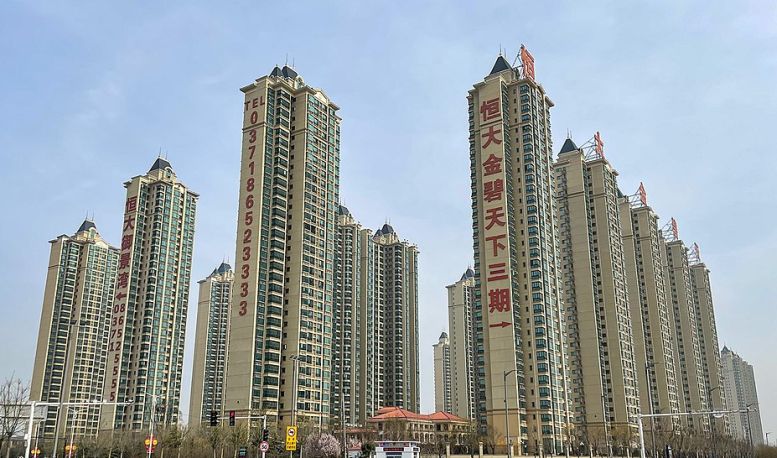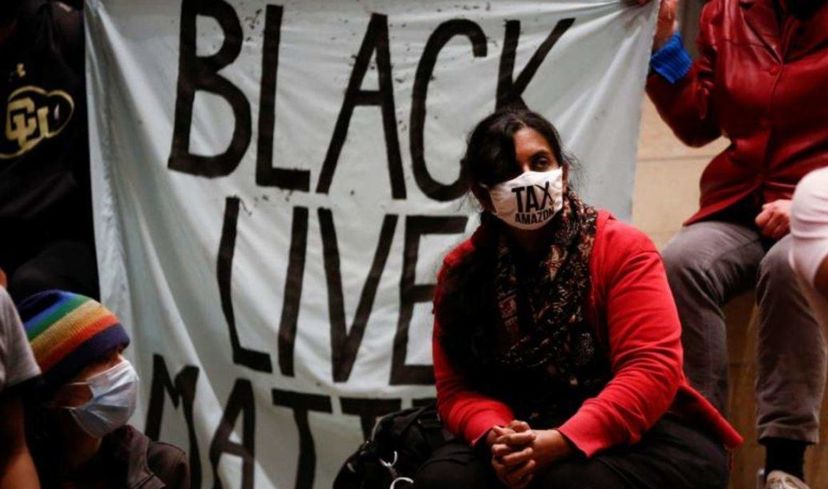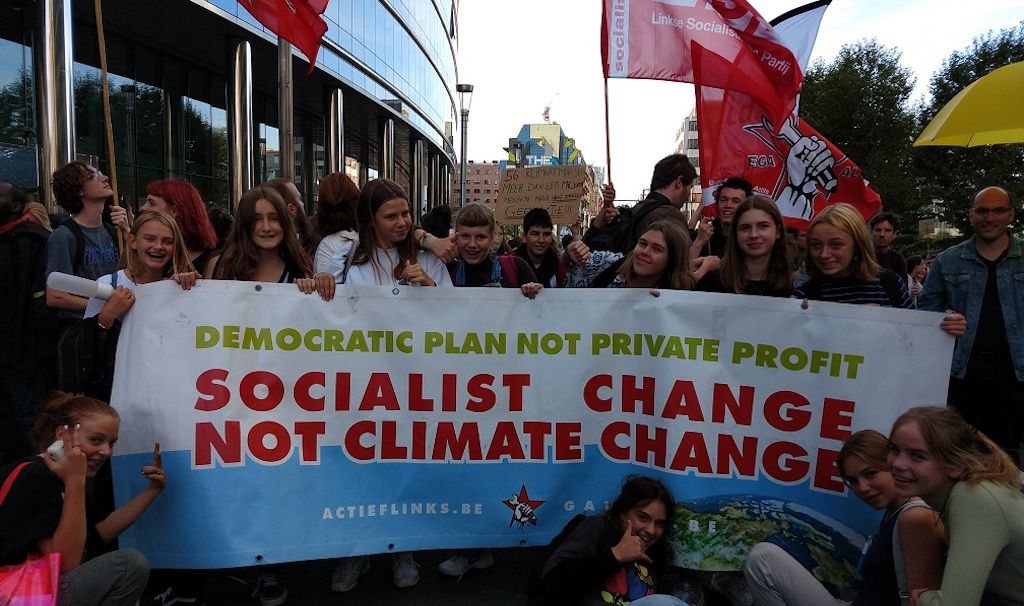Vincent Kolo is a contributor to chinaworker.info.
A succession of economic and political disasters is casting a dark cloud over Xi Jinping’s impending coronation as China’s dictator-for-life. Paralyzing “Zero COVID” lockdowns of major cities, collapsing GDP growth, record unemployment levels, and accelerating imperialist conflict in the shadow of the Ukraine war have plunged Chinese society into its deepest crisis for thirty years.
All social classes have a sense of deep economic pessimism and fear of what the future holds. The brutality of the “Zero COVID” policy has stoked anger on an unprecedented scale against the regime.
Xi has reportedly instructed senior officials that this year’s GDP must at all costs come in above the US figure, an improbable outcome unless the US economy has a hard landing. Bloomberg has downgraded its China GDP forecast to 2 percent while forecasting 2.8 percent for the US. No international forecasting agency now predicts growth above 4.3 percent for China in 2022, far short of the government’s 5.5 percent target.
At the five-yearly congress of the so-called Communist Party (CCP) to be held later this year, Xi will extend his rule with a third term as general secretary or possibly by reviving the long dormant post of CCP chairman.
“Stability”
Xi’s concentration of personal power and abandonment of the “collective dictatorship” model of the past four decades, since the CCP under Deng Xiaoping initiated the process of capitalist restoration, is an expression of deep crisis within the regime and Chinese society. Social, political and regional tensions are reaching bursting point. These internal pressures are one of the drivers of imperialist conflict, as Chinese capitalism is forced to seek a bigger global role. At the same time, the imperialist US-China Cold War exacerbates internal contradictions.
This year’s outbreaks of the highly transmissible Omicron variant have brought forth a policy of dystopian shock-and-awe from the dictatorship. The mass lockdowns of 2022 have no parallel in human history. Over 300 million people have been directly affected, enduring weeks of house arrest, loss of income, food shortages, denial of non-COVID medical treatment and bureaucratic bullying. But even far away from the lockdowns the impact is big — as shown by the collapse in consumer spending — because people fear they may be next.
State censorship means it’s not possible to question Xi’s “Zero COVID” policy. Even the WHO’s mild criticism of the policy as “unsustainable” has been expunged from public view. Global capitalism has gradually come to the realization that Xi’s regime will persist with “Zero COVID” at least until after the CCP Congress, despite its staggering economic costs.
“Zero COVID”, who pays?
These are reflected in the sharp economic downturn with second quarter GDP likely to show a contraction, but also in the additional burden on overstretched local governments, which have to fund mass nucleic acid testing of citizens every 72 or even every 48 hours. A report from Soochow Securities puts the cost of regular COVID testing for all of China’s first and second-tier cities (combined population 505 million people) at 1.7 trillion yuan a year, or 1.3 percent of GDP. That’s more than China’s defense budget of 1.45 trillion yuan. This does not of course include the much bigger cost to the economy as a whole from lost output, lost consumer spending, and severed supply chains.
Most local governments are in a state of serious financial distress as a result of the drastic reduction in land sales (due to the real estate meltdown) and tax revenue (due to lockdowns and government tax relief). Local governments across the country are imposing wage cuts on their staff and even demanding repayment of bonuses from 2021.
For the working class, the “Zero COVID” policy means increased exploitation, loss of wages, and increased indebtedness. Shanghai for example has almost five million migrant workers from poorer provinces. During lockdown most of these workers have had no work and no income.
To meet the demands of the capitalists, especially foreign capitalists who are increasingly shifting production out of China, a “closed loop” system has been introduced at designated factories during lockdown under which workers maintain some level of production in a sealed environment. Instead of working from home, the “closed loop” system means living at work. At Tesla’s Gigafactory in Shanghai, for example, thousands of auto workers have been sleeping on the factory floor during lockdown to put in 12-hour shifts, six days a week.
There have been at least seven other pandemic-related protests by workers in Shanghai since March. One online video shows a protest in June by dozens of hazmat-suited dabai enforcers (“Big Whites”) marching to demand unpaid wages.
A tool of social control
These incidents disprove the regime’s claim that its pandemic policy puts “people first.” This also answers misguided groups on the left internationally who uphold China’s COVID policy as a progressive alternative to the disastrous pandemic mismanagement of Western governments. The CCP’s stance is equally reactionary, anti-working class and pro-capitalist.
The Xi regime’s emphasis on mass nucleic acid testing has triggered a gold rush for businesses in this field. That includes over 400 new companies launched last year alone, many of which are naturally linked to the CCP elite. The net profits of 20 companies listed on the Shenzhen Stock Exchange’s COVID-19 Detection Index doubled in 2021. Among China’s top 100 billionaires, more than one-tenth are from the pharmaceutical or biotech industries.
Xi’s regime is not only persisting with “Zero COVID” but entrenching it into a system for the longer term. The infrastructure of mass testing and quarantine is being massively expanded, with hundreds of thousands of permanent testing centers being built across the country.
In so doing, Xi’s regime is significantly upgrading its apparatus of social control and repression under the pretext of fighting the virus.
Restrictions on citizens’ movements are reinforced by the electronic tagging of the whole population through the obligatory COVID health code app. This technology did not exist during the first phase of the pandemic two years ago. The Wuhan lockdown, which shocked the world at the time, was much softer than this year’s iterations in Shanghai and elsewhere.
How unique?
The economic crisis is not solely or even mainly due to Xi’s “Zero COVID” policy, even if this has greatly aggravated the situation. The decisive economic turning point came last year when the housing bubble finally burst. This sector accounted for 28 percent of China’s GDP. It was the main motor of the CCP’s debt-driven state capitalist economic model and that motor is now broken. Current debt levels, at more than 300 percent of GDP, are constricting the regime’s ability to reflate the economy with financial stimulus. Global capitalists and their Chinese counterparts are increasingly frustrated by the lack of a “big bazooka” stimulus package on the scale of 2008 or even 2020.
In past debates in the CWI (the forerunner of ISA) the previous leadership of the International Secretariat believed the high degree of state control in China, a legacy of its Stalinist past, afforded the regime a unique ability to manage the economy to avoid crises. The CCP could do things no other government could do, they reasoned.
This was true but only up to a point. Overstating the case could lead to missteps in analysis and perspectives. Comrades including those from China, Hong Kong and Taiwan, argued it was not enough to point to the “unique” characteristics of China’s state capitalist economy (not a planned economy, but a capitalist economy ruled by a dictatorship with significant bureaucratic and state interventionist features), but also to stress their limitations. These differences do not bestow economic invincibility or immunity from crises as even some capitalist commentators imagine. Ultimately, although processes can play out on a different timescale, the laws of capitalist economics assert themselves.
Sales of new homes have fallen for eleven months in a row and by a record 59 percent in May, year-on-year. Last year, the property bubble’s exhaustion first revealed itself as a liquidity crisis at big developers like Evergrande Group. That this was just the tip of the iceberg as we explained has been confirmed.
Mass unemployment
Soaring unemployment is the most alarming gauge of China’s economic problems. The most explosive ingredient is unemployment for 16–24-year-olds which in May hit a historically high 18.4 percent. This is more than double the rate of youth unemployment in the US (7.9 percent) and higher than in the EU (13.9 percent).
A new level of economic hardship and uncertainty is molding the consciousness of young people, workers and migrants, whose faith in the ability of the CCP to manage economic affairs is being shaken to the core. The radicalization of the younger generation is reflected on social media — the only channel for limited public discussion and social commentary in China.
The next period of Xi’s rule, as he attempts to cement his control for coming decades, will be much stormier. China’s demographic crisis — fewer workers and consumers — and its stalling debt-ridden economy looks more and more likely to wreck the regime’s grand ambitions to overtake US imperialism, while the latter faces its own serious problems. For socialists these developments are of enormous significance as the two biggest economic and military powers of world capitalism enter a phase of unprecedented crisis and political upheaval.



